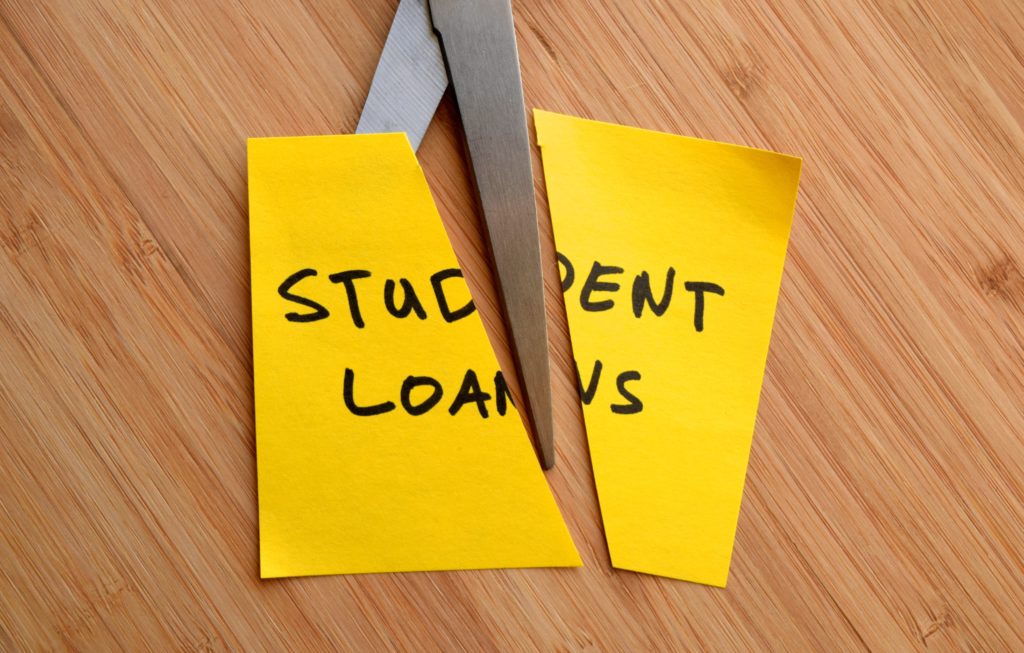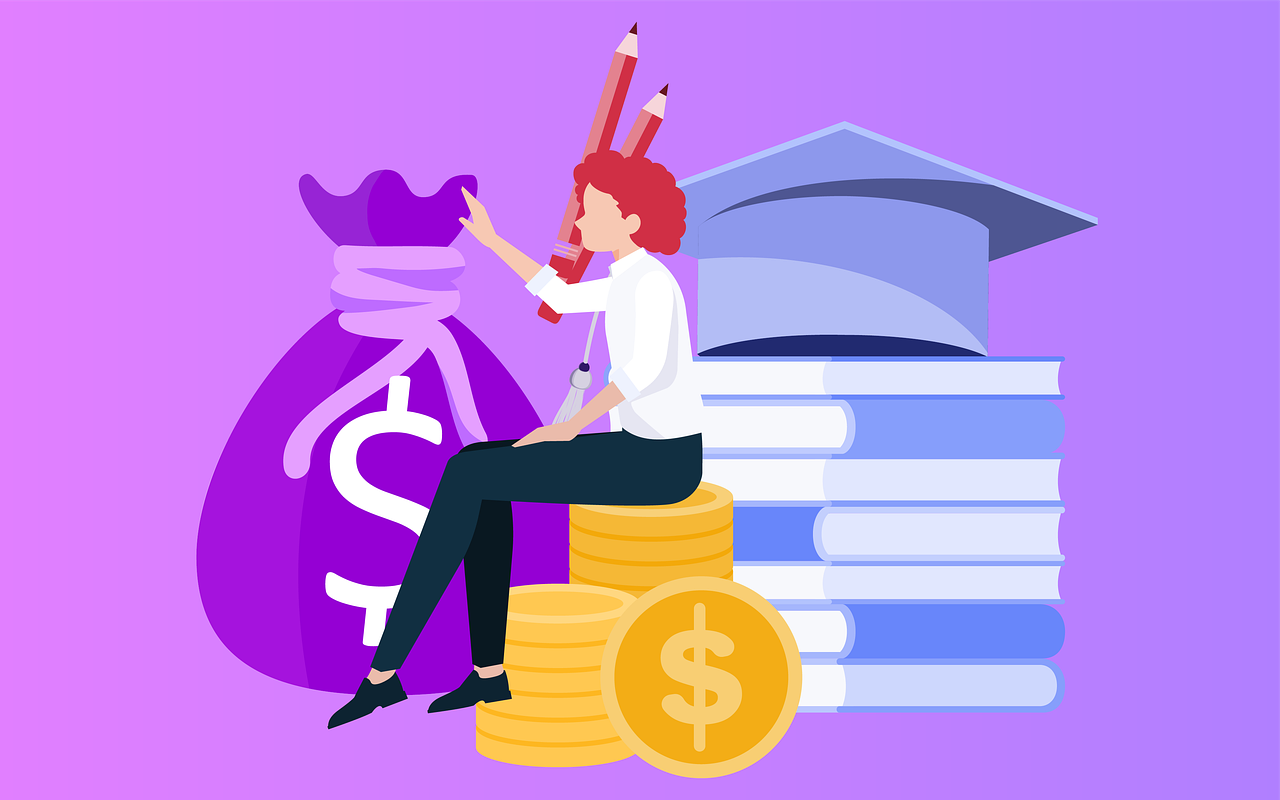Student Loan Cancellation During Coronavirus Pandemic
Biden’s student loan forgiveness plan includes improving the Public Service Loan Forgiveness Program. Approximately $90 billion will be repaid to student loan borrowers on September 30, 2021, according to the U.S. Department of Education.
The targeted borrowers are those pursuing public service loan forgiveness. In addition to having no required federal student loan payment, even if a student loan borrower did not make an actual payment since March 2020, it still counts toward the required 120 monthly payments for the program. This is another form of student loan cancellation.
Information About Coronavirus and How It Affects Students, Borrowers, and Parents
The U.S. Department of Education has extended the repayment period for federal loans. It was extended until January 31, 2022, to make payments. Seek advice from your school before taking any financial assistance (such as a “pandemic support” or “Biden loan forgiveness). The federal government has suspended all student loan payments and halted interest through the end of January 2022.
U.S Major Issue: Student Loan Debt
The total American student loan debt right now stands at $1.73 trillion. Nearly $6 million in federal funding is owed to the government, and there are an estimated $770 billion of student loans over the course of two years. Students, who are among the most vulnerable members of society in 2019, owe $25 million. Student loans are the highest in history, topping 1.8 billion borrowers per year.
Average Student Loan Debt
The average student borrows over $30,000 to pursue a bachelor’s degree. Approximately 45.3 million people are in debt due to student loans. 95% of those owe federal student loans.
Total Private Student Loan Debt
U.S. private student loans (loans not funded by the federal government) account for 70% of all student loan debt nationwide, totaling close to $136.31 billion dollars in outstanding obligations.
How Does Student Loan Interest Work?
If you need a student loan, the interest rate is an additional percentage for that specific loan. Federal student loans are guaranteed while private student loans vary depending on market trends or competitive rates. Students with good credit scores and strong financial health qualify for the most affordable private loans.
Outstanding Student Loan Balance Statistics
As of July 2021, the Education Department pays about 90% of all loan applications. The federal average for the outstanding student loan balance of American students is $1.59 trillion. A total of 4.69 million borrowers are college students across the country.
Types of Student Loans
There are two kinds of student loans, Federal and Private. The federal government offers a variety of repayment plans to help you make your monthly payments more manageable. Some examples include the standard ten-year repayment plan or the income-based payment program where you can set up an annual payment as low as $0 per month depending on your yearly earnings and family size.
Private loans are typically issued by banks or other financial institutions. The repayment is handled independently of your federal student loan servicer. As such, if you have both types of debt, it is important to ensure that they are in sync, otherwise, you will be paying more than necessary on interest fees as well as a larger total amount for the debt. For example, if one of your loans is subsidized by the federal government with a low-interest rate and another has a higher interest rate – say 12% instead of 0%, you might be paying $0 per month on the lower-interest loan but over $200 in monthly payments for the other. It is important to keep these kinds of details straight so the debt is paid off in a timely manner.
The total federal student loan debt in America exceeds $650 billion, and the total private student loan debt exceeds $200 billion.
Student Loan Debt Cancellation: Did they Cancel Student Loan Debt in 2021?
On August 19, 2021, the Biden administration announced that it would automatically erase 323,000 borrowers’ federal student loan debt. According to experts, broad-based student loan debt forgiveness is not likely to happen anytime soon.
There are people who need to access the new student loan forgiveness program. For qualified individuals, relief can begin as early as September.
Who Are Eligible to Receive the Student Loan Forgiveness?
Under the new regulation, 323,000 disabled borrowers will receive more than $5.8 billion in automatic student loan discharges. The change applies to borrowers who have been identified through an existing process of matching their data with the Social Security Administration.
Direct loans from the government are eligible for forgiveness. Stafford loans, which replaced direct loans in 2010, are also eligible. If you have other federal loans, you may be able to consolidate them into a direct consolidation loan that would make you eligible. Private loans do not qualify for forgiveness.
Federal student loan borrowers who attended for-profit colleges and seek to have their debt forgiven because of fraudulent activity or breaking specific laws will not find relief. The May 29, 2020 veto by President Trump overturns regulations that would have made it more difficult for someone to access loan forgiveness.
State and school officials have made a number of changes in an effort to keep up with changing standards. On July 1, 2020, new, more onerous regulations took effect. Some states are enforcing them earlier than others.
Federal Student Loans vs. Private Student Loans
The total student loan debt in our country is estimated at about 1.8 trillion dollars. Federal student loans are the vast majority of debt when it comes to college finances. But a significant share of outstanding student loan debt is comprised solely of private loans – more than $136 billion, according to NerdWallet and MeasureOne.
Federal student loans are generally more lenient with repayment, default resolutions, and loan forgiveness. Traditionally, federal student loans are the only loan type that provides certain repayment options. Private student loans typically only provide a few options to the borrower but do offer flexibility in repayments.
Biden’s Student Loan Forgiveness
Joe Biden recently expanded relief for borrowers who received partial loan forgiveness through the Borrower Defense to Repayment program. This program was initiated to cancel federal student loans for borrowers who were fraudulently enrolled in their schools. That relief could include $500 million in student debt cancellation for 18,000 borrowers.
The Biden administration has extended the delay on federal student loans until January 31, 2022. Originally, the relief was set to end in September.
As part of its effort to revise the federal student loan repayment and forgiveness policies, the Education Department has announced the first phase of public hearings. Those who hold federal student loans will receive relief through this program, but private borrowers are not eligible.
Why Are Private Student Loans Excluded From Biden’s Relief Programs?
Biden’s authority is limited to federal law and he must act within statutes and regulations currently in force. Federal student loan programs are governed by statutes such as the HEA and CARES Act, which was enacted last year. However, these statutes do not allow Biden to provide any relief for private student loan borrowers.
Further Details on Student Loan Forgiveness in 2021
Biden has announced a program that will assist those who are struggling to pay off student loan debt. Targeted student loan forgiveness is different than wide-scale student debt forgiveness. The latter helps most or all borrowers. U.S. Sen. Elizabeth Warren and Senate Majority Leader Chuck Schumer have encouraged President Joe Biden to propose a wide-scale student loan debt cancellation plan up to $50,000 of student loans. However, there has been no wide-scale student loan cancellation. Biden, rather than focusing on the cancellation of student loan debt, has instead focused on the cancellation of loans for two major groups. Cares Act made it possible for a student loan to be canceled in addition to the $60 billion of student loan cancellation that student loan borrowers will have received through this Act. The $2.2 trillion stimulus package.
Student Loan Cancellation: How to Apply
To apply for the cancellation of these loans, applicants may need to meet certain requirements. The Biden administration is working to streamline the process so that more people, who qualify, can get automatic student loan cancellation. For example, a disabled person with loans would first need to submit an application and income information. They would also be subject to a three-year monitoring period. In October, after negotiations between parties are completed, the Education Department will eliminate the application and monitoring period.
Requirements for Student Loan Cancellation 2021
The following conditions must be met in order to cancel student loans:
- You have federal student loans from a college or university.
- If you think your school intentionally misled or engaged in other misconduct.
- If the harm caused by identity theft has significantly adversely affected your financial situation.
- You can prove that your college and/or university has violated a state law relating to your student loans or the educational services provided.
Cancellation of Student Loan May Help More Borrowers But Do Not Expect Good News Yet
Biden has been helping more student loan borrowers to get their loans canceled. His approach has resulted in the cancellation of $3 billion in student loans. Biden’s latest focus is to improve the Public Service Loan Forgiveness program, which would help teachers, service members in the military, nurses, public servants, and any first responders get a federal student loan cancellation.
On April 30, 2021, the Education Department announced that $452,7 million in student loans had been forgiven through the Public Service Loan Forgiveness Program.
What If You Do Not Qualify For Biden’s Loan Payment Forgiveness?
Approximately 500,000 federal student loan borrowers have been granted forgiveness. Based on the latest data, there are about 45 million student loan borrowers. How do you get student loan cancellations? It is possible that Biden will enact a wide-scale student loan cancellation, but it is more likely that he will continue to focus on targeted bills for students. Some borrowers can benefit from the cancellation, but not all would qualify. Biden’s student loan cancellation to date has been based on existing law. It is unclear if Biden has the legal authority to cancel loans unilaterally without further authorization from Congress.
You may be able to get some or all of your student loan debt forgiven. The two best ways for you to do this are by going through an income-driven repayment plan and the Public Service Loan Forgiveness program. Both apply only to federal student loans and can take 10 years (public service loan forgiveness) or 20 to 25 years (income-driven repayment plans). Most importantly, student loan relief has been extended until January 31, 2022.
Student Loan Repayment Options: Income-Driven Payment Plans
In addition to income-based repayment plans, Biden intends to restructure loan forgiveness programs. Following 120 qualified loan payments, you may qualify for tax-free loan forgiveness if you still owe a balance on a public service loan.
Payments under the standard repayment plan or an income-driven repayment plan qualify for Public Service Loan Forgiveness. In order for you to benefit from this, you need to make 120 payments on an income-driven plan. On the standard plan, you would pay off the loan before it is eligible for forgiveness.
Programs such as Income Contingent Repayment (ICR), Income-Based Repayment (IBR), Pay as you Earn (PAYE), and Revised Pay as You Earn (REPAYE) are programs that could help with student loans. An income-driven repayment plan allows borrowers to repay their loans using these formulas applied to their incomes and family size.
For student loan holders, the Borrower Defense to Repayment allows for the cancellation of federal student loan debt in certain circumstances.
Private Student Loans
Income-driven repayment is not applicable for private student loans. However, some lenders offer student loan repayment options that can reduce your payments.
Consider student loan refinancing if you are having trouble repaying private student loans. A lower rate is available if you have a high interest rate on your current loans and have an excellent or good credit score, stable income, or are co-signed by someone who is.
Refinancing is most beneficial to those with strong and stable incomes. Consider choosing a lender with a generous policy if you are considering pausing or lowering your monthly bill.
Some private lenders will allow you to refinance federal student loans, which can save you money once you qualify for a lower interest rate. Refinancing federal student loans means losing access to benefits like income-driven repayment plans and loan forgiveness.
Here are other options to help you save money if you have student loans:
- Student loan refinancing
- Income-driven repayment plans
- Public service loan forgiveness
Conclusion
The bottom line is student loans can be really overwhelming and loan cancellation is still uncertain and forgiveness is not easy to earn.
Student loan forgiveness is a possibility that offers some relief to student loan borrowers toward the end of their repayment period but it is still uncertain. All student loan cancellation and forgiveness programs come with certain conditions, requirements, and cancellations.















